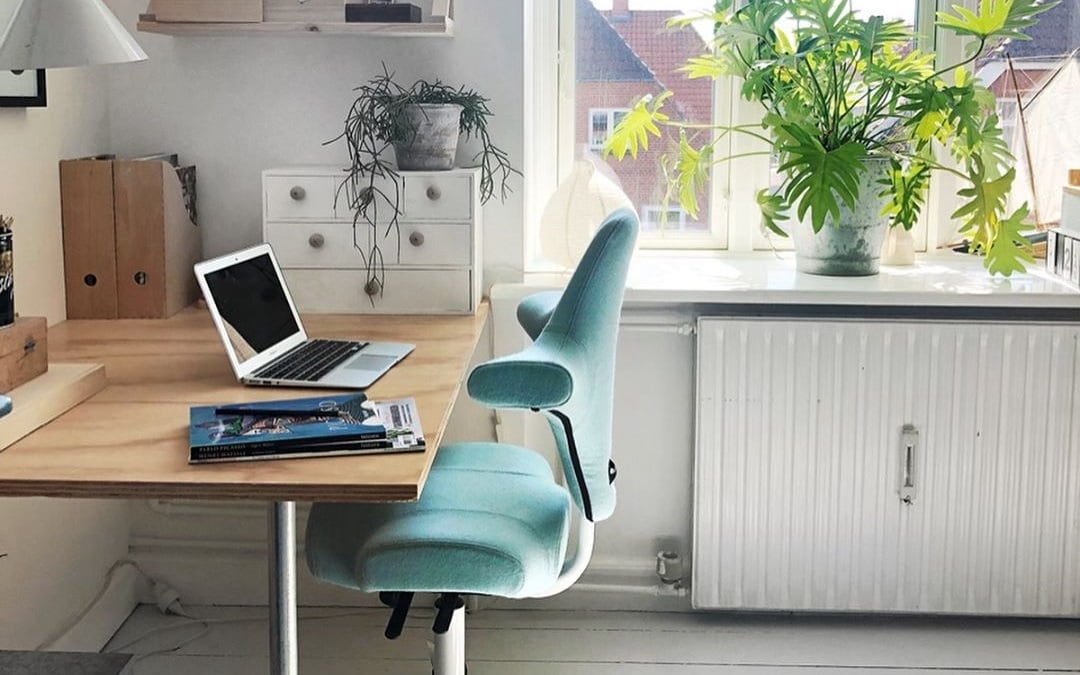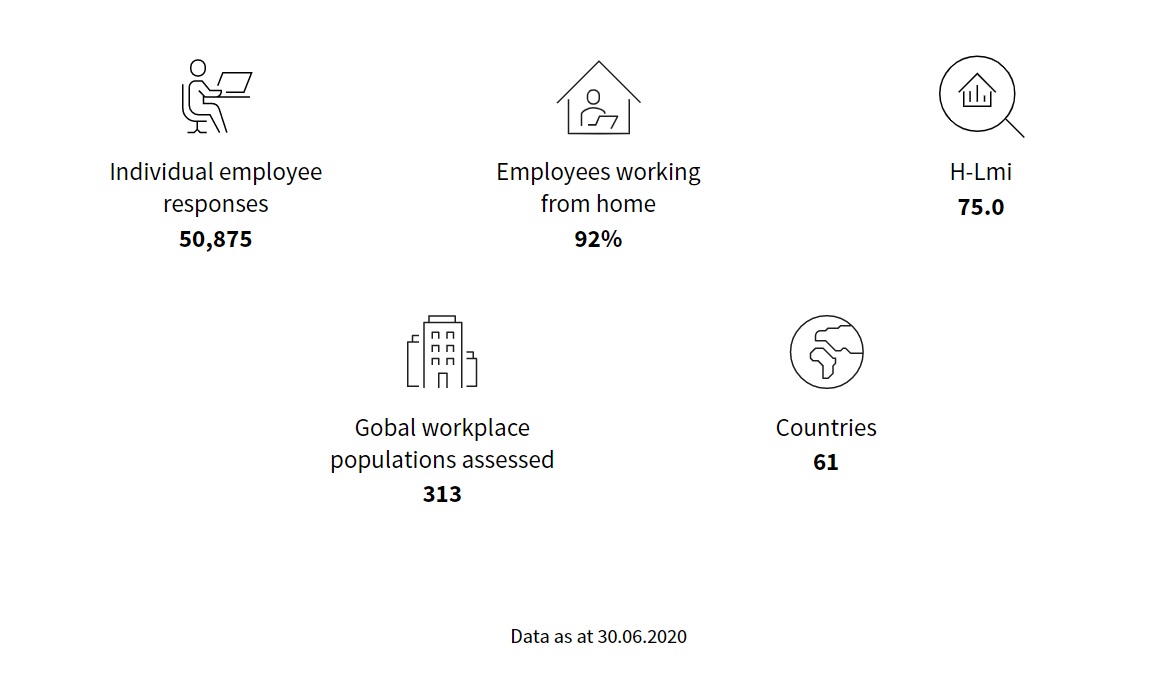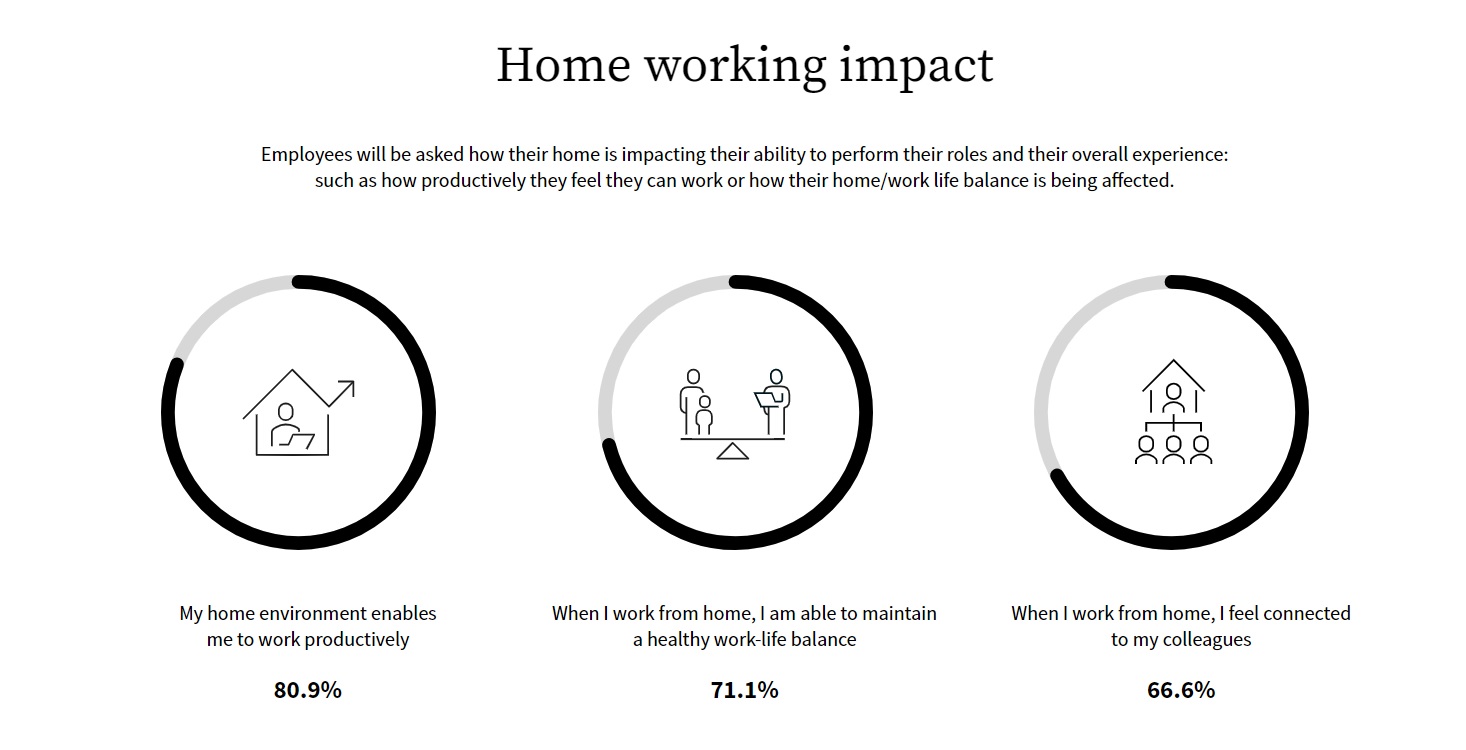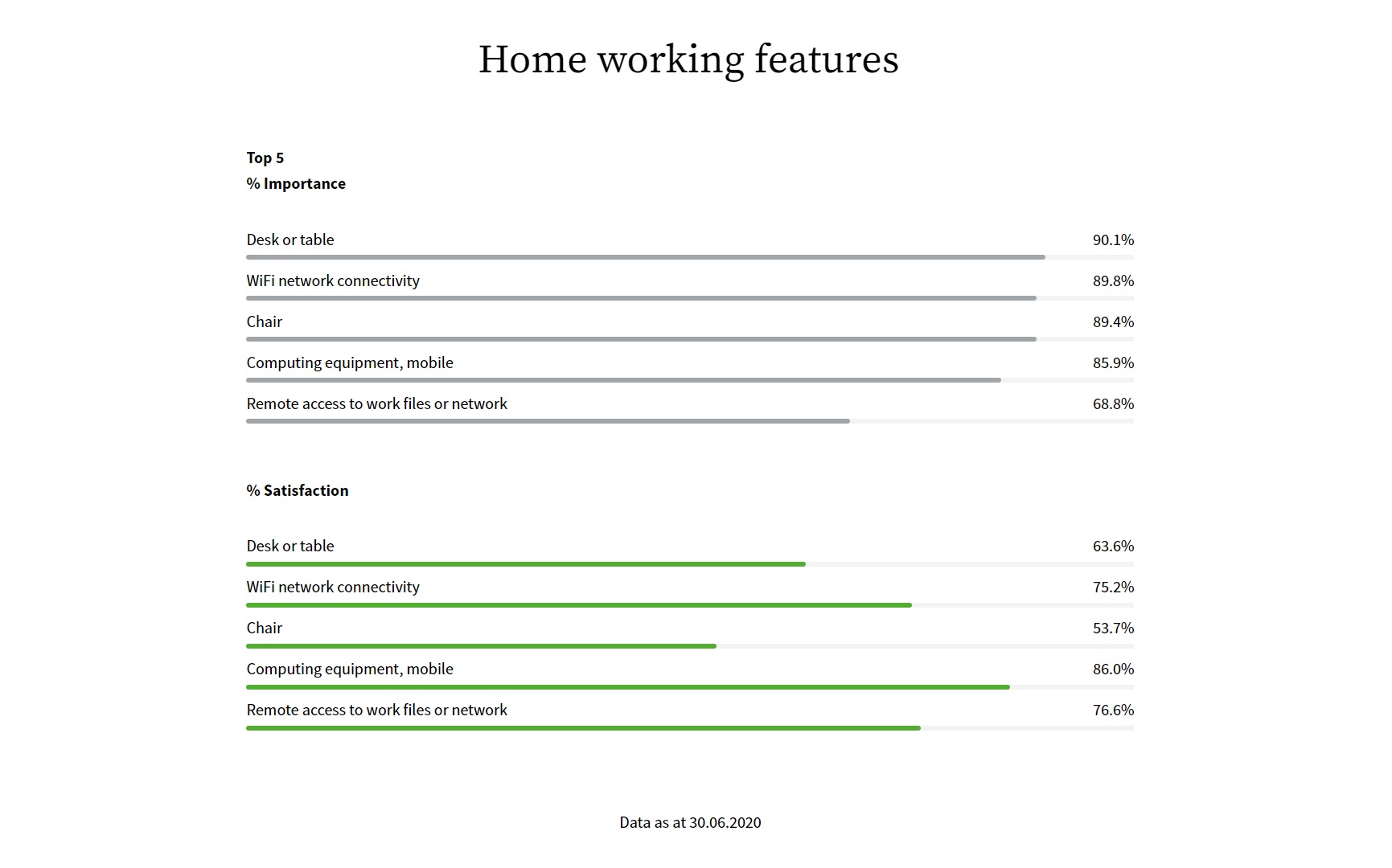The challenges of working from home
If we look a little deeper than the headlines, it is not so clear-cut. When asked about specific activities, and specific elements of the working environment, there are some startling indifferences.
On the positive side, for those working from home, some of the most important aspects of their work are much better supported at home than in the office. Individual focused work, desk-based was the most popular work activity, with 91% saying they felt adequately supported, compared to only 78% of office workers (a 13% gap) with planned meetings and telephone conversations coming second and third, both again supported better at the home, with telephone conversations showing a massive 28% gap in satisfaction.
However, activities such as learning from others, informal social interaction, hosting clients and spreading out materials scored higher in office scenarios, although their importance was not as high. Only four of the 21 activities scored higher in the office compared to the workplace.
On the other side, the office really came into its own when looking at the workspaces themselves. Workers found that important features like desks, chairs and computing equipment were far more satisfactory in the office than at home. An office chair, for instance, was deemed important by 90% of respondents, but only 54% found the one in their home satisfactory, with nearly half not pleased with their current seating situation. This can be seen across the board, with five of the nine items featured scoring better in the office than at home, including desks, printing & copying equipment, and wired networks.
Tim: “The challenge, of course, is that averages mask significant highs and lows… There are some activities that home is supporting way better than the average workplace, there are also some activities for employees that the home is very much struggling to support. It’s a really mixed picture, it depends on what the employee is doing in their role and the environment that they have available to them at home.”
Click here to see more details from the Leesman Survey





.png)